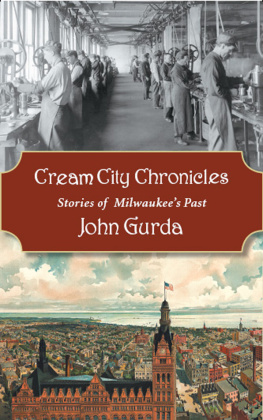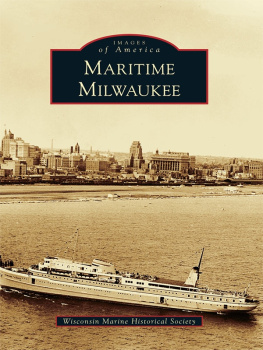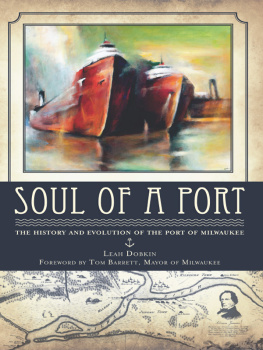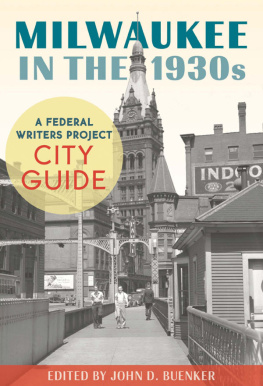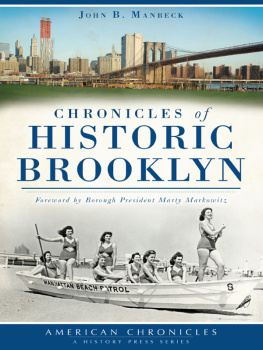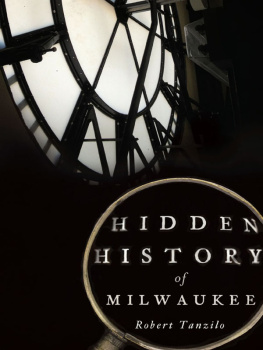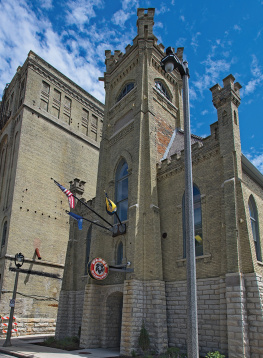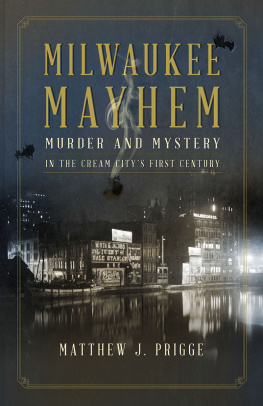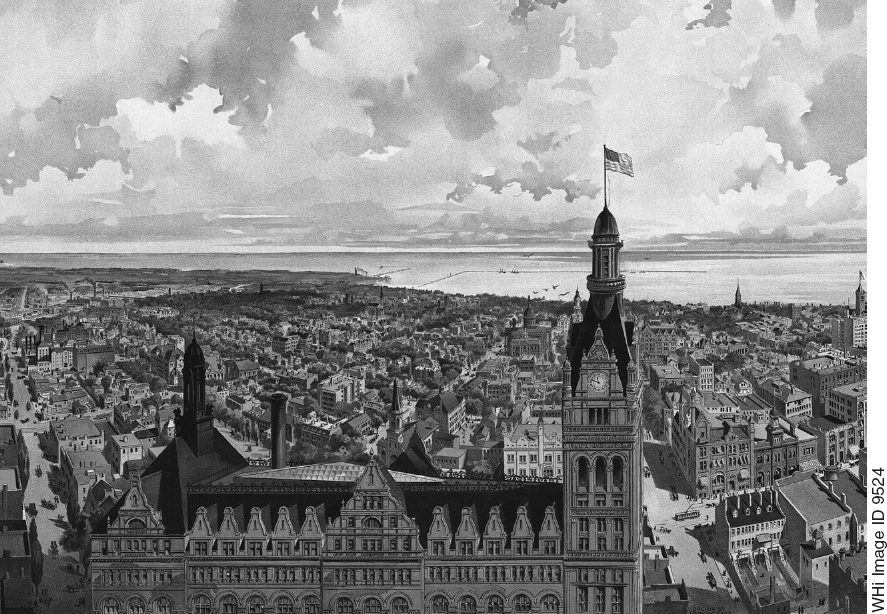
Publication of this book was made possible in part by grants from
Gary and Anne Grunau
The Harry F. and Mary Franke Idea Fund of the Greater Milwaukee Foundation
Wisconsin Preservation Fund
Daniel Hoan Foundation
Dorothy Inbusch Foundation
D.C. Everest Fellowship Fund
Published by the
Wisconsin Historical Society Press
2007 by the State Historical Society of Wisconsin
E-book edition 2014
For permission to reuse material from Cream City Chronicles: Stories of Milwaukee's Past (ISBN 978-0-87020-375-6; e-book ISBN 978-0-87020- 523-1), please access www.copyright.com or contact the Copyright Clearance Center, Inc. (CCC), 222 Rosewood Drive, Danvers, MA 01923, 978-750-8400. CCC is a not-for-profit organization that provides licenses and registration for a variety of users.
www.wisconsinhistory.org
Photographs identified with PH, WHi, or WHS are from the Society's collections; address requests to reproduce these photos to the Visual Materials Archivist at Wisconsin Historical Society, 816 State Street, Madison, WI 53706.
Front cover: (top) Workers at International Harvesters Milwaukee Works, WHi Image ID 7603; (bottom) Panoramic View of Milwaukee, WHi Image ID 12022
Cover concept by Kathleen Carey
Cover designed by Timothy OKeeffe
Text design by Marilyn Barr, Dedicated Business Services
11 10 09 08 07 1 2 3 4 5
The Library of Congress has cataloged the printed edition as follows.
Gurda, John.
Cream City chronicles : stories of Milwaukees past / John Gurda.
p. cm.
Compilation of the authors columns originally published in the Milwaukee journal.
Includes bibliographical references and index.
ISBN-13: 978-0-87020-375-6 (hardcover : alk. paper)
ISBN-10: 0-87020-375-4 (hardcover : alk. paper)
1. Milwaukee (Wis.)HistoryAnecdotes. 2. Milwaukee (Wis.)Social life and customsAnecdotes. I. Title.
F589.M657G86 2007
977.595dc22
2006017100
To the memory of Frank Zeidler (19122006)
mayor, mentor, and model Milwaukeean
Contents
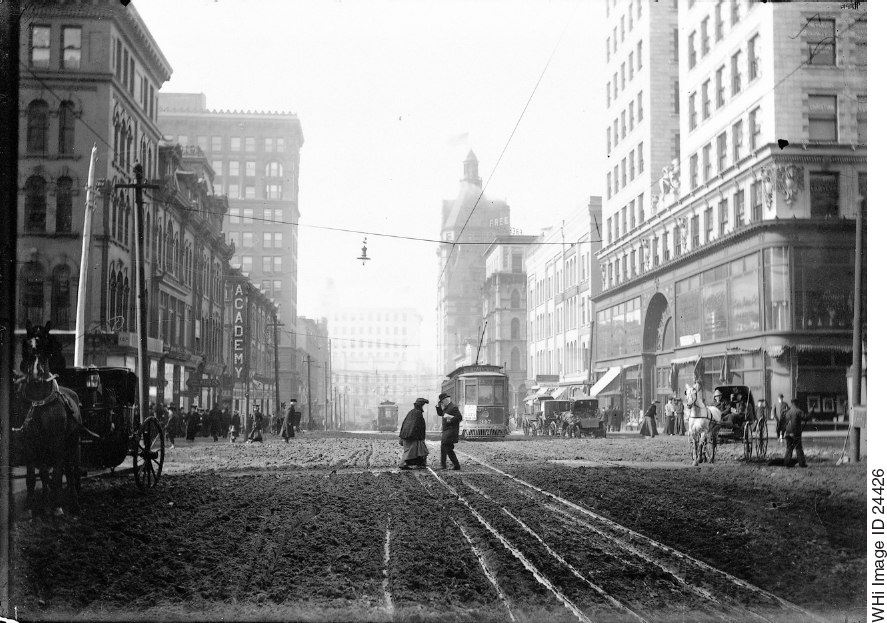
Milwaukees downtown, 1901
Introduction
History as Story
I was in fifth grade the first time I heard, or rather saw, history defined. Sister Josetta, one of the more formidable spirits at St. Marys School in Hales Corners, wrote history on the chalkboard, paused to see if the class was paying attention, and then deftly altered the word to make it his/story. The study of the past, she declared, was the story of man.
Sister Josetta was missing more than half the population, of coursesome later scholars would insist on her/storybut the point she made was valid: History is, above all, story. Too often presented as a lifeless catalog of dates and events, presidents and kings, history is in fact a rich chronicle of human experience that, wherever you start, has a beginning, a middle, and any number of ends, including the present.
Cream City Chronicles is a book of history as stories. They had their first incarnation as columns in Milwaukees Sunday newspaper, beginning with the Milwaukee Journal in 1994. The Journals editors were launching a feature called Our Town, and they invited me to write about the citys history. My first column, a short piece describing the old Falk brewery, appeared on March 6, 1994. Barely a year later, the afternoon Journal and the morning Sentinel merged to form, naturally, the Milwaukee Journal Sentinel. Our Town didnt survive the move, but the history column did, and its been appearing in the Crossroads section of the Journal Sentinel ever since, on the first Sunday of each month.
Writing for the newspaper meant following in the footsteps of columnists like Bill Hooker, Russell Austin, Robert Wells, Jay Joslyn, Jay Scriba, and others who looked back to Milwaukees roots on a regular basis. Some of those figures, particularly Scriba, were heroes of mine, and I felt both honored and a bit intimidated to be carrying on their tradition. At the same time, my goal for the column was crystal-clear: to connect what was happening in the present with what had happened in the past. That meant supplying the historical context for the newest landmark, the latest ethnic shift, or the freshest scandal, most often descriptively but also, when the occasion called for it, critically. The columns became a sort of running historical commentary on the passing scene. One unintended consequence was that some began to seem dated only months after they were published. All have been revised for this book, some substantially, in an effort to make them evergreen for a new (or returning) round of readers.
However well-read and however well-written, newspapers commonly end up wrapping fish or lining litter boxes. Im grateful that the Wisconsin Historical Society has seen fit to rescue these stories from such an ignominious end. Im also pleased that Cream City Chronicles will become, as Sister Josetta might have said, part of our permanent record, taking whatever place it may find in the distinguished roster of Society publications going back to the states formative years.
My own approach to history is unabashedly presentist. I have the utmost respect for those who study Phoenician trade routes or colonial American handcrafts, but my interest centers on how we got here, to this time and place. And so history, in these pages, is Milwaukees storyhis and hers and ours and theirs. Wherever we reside, the story of the community around us can provide a lively context for our personal stories. But history has even more to offer. An awareness of the past can foster qualities all too rare in the swelling tumult of the twenty-first century: insight, a sense of proportion, and hope for the journey ahead. May Cream City Chronicles be an agreeable companion as the storyand the journeycontinue.
John Gurda
Spring

Milwaukee, 1858

Solomon Juneau
Josette Juneau
Solomon Loves Josette
Frontier Valentines Found Happiness in Milwaukee
T heir romance began in the wilderness. He was a French-Canadian voyageur who had been knocking around the Great Lakes region for almost a decade. She was a fur traders daughter, French and Menominee by ancestry, who had probably never set foot outside Wisconsin. When they met, Milwaukee was not even a dot on the map, but Solomon Juneau and Josette Vieau became the first sweethearts in the citys recorded history.
Josettes father, Jacques Vieau, had been trading with local Indians since 1795, when he opened a small post overlooking the Menomonee Valley in todays Mitchell Park. Vieau and his wife, Madeline, had at least twelve children, and their brood spent part of each year in Milwaukee. Josette was one of the oldest.
A newcomer entered the household in 1818, when Vieau brought Solomon Juneau to Milwaukee as his clerk. After what must have been a closely watched courtship, given the familys cramped quarters, Solomon and Josette were married in 1820. He was twenty-sevenpractically middle-aged at the timeand she was seventeen.

